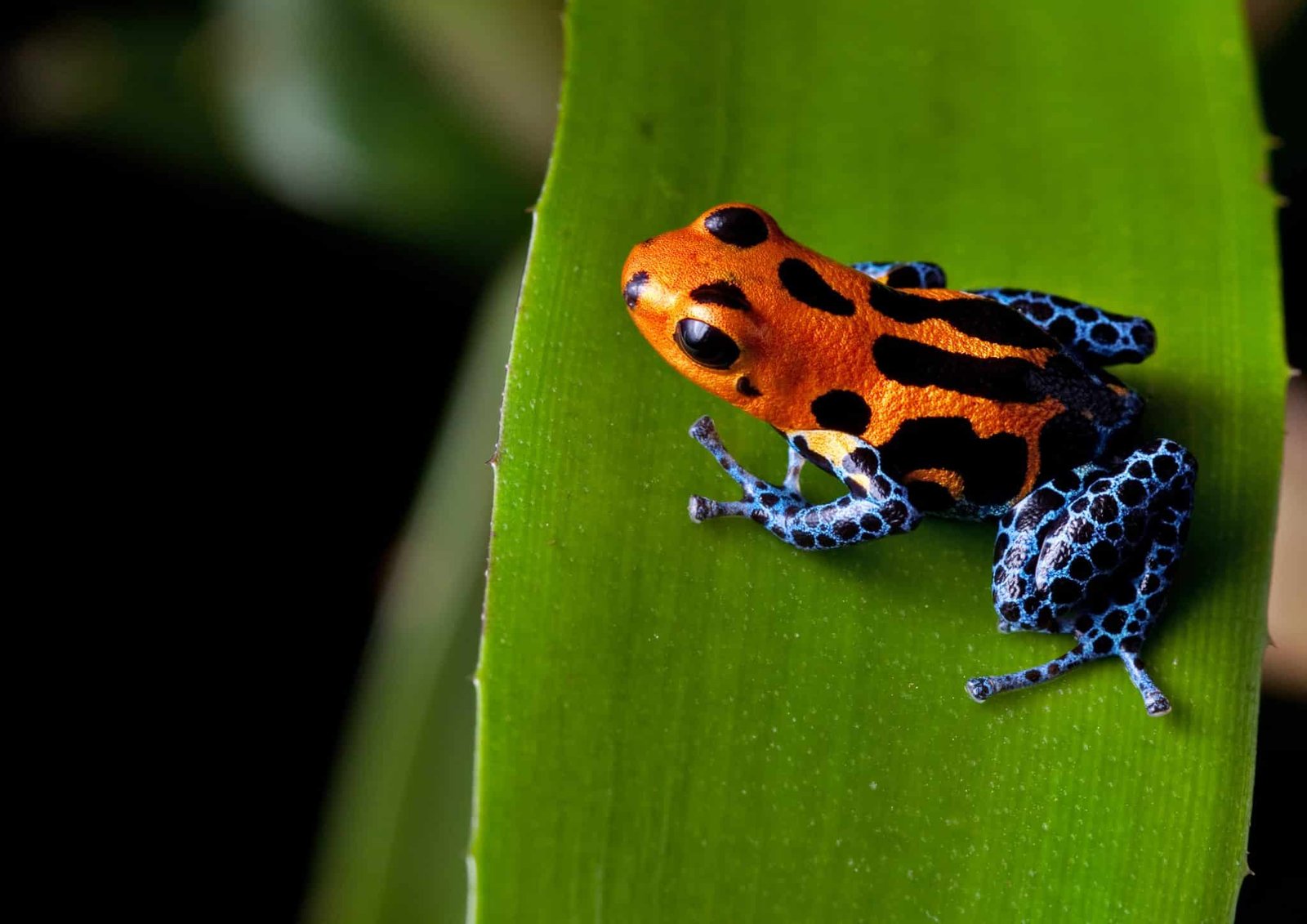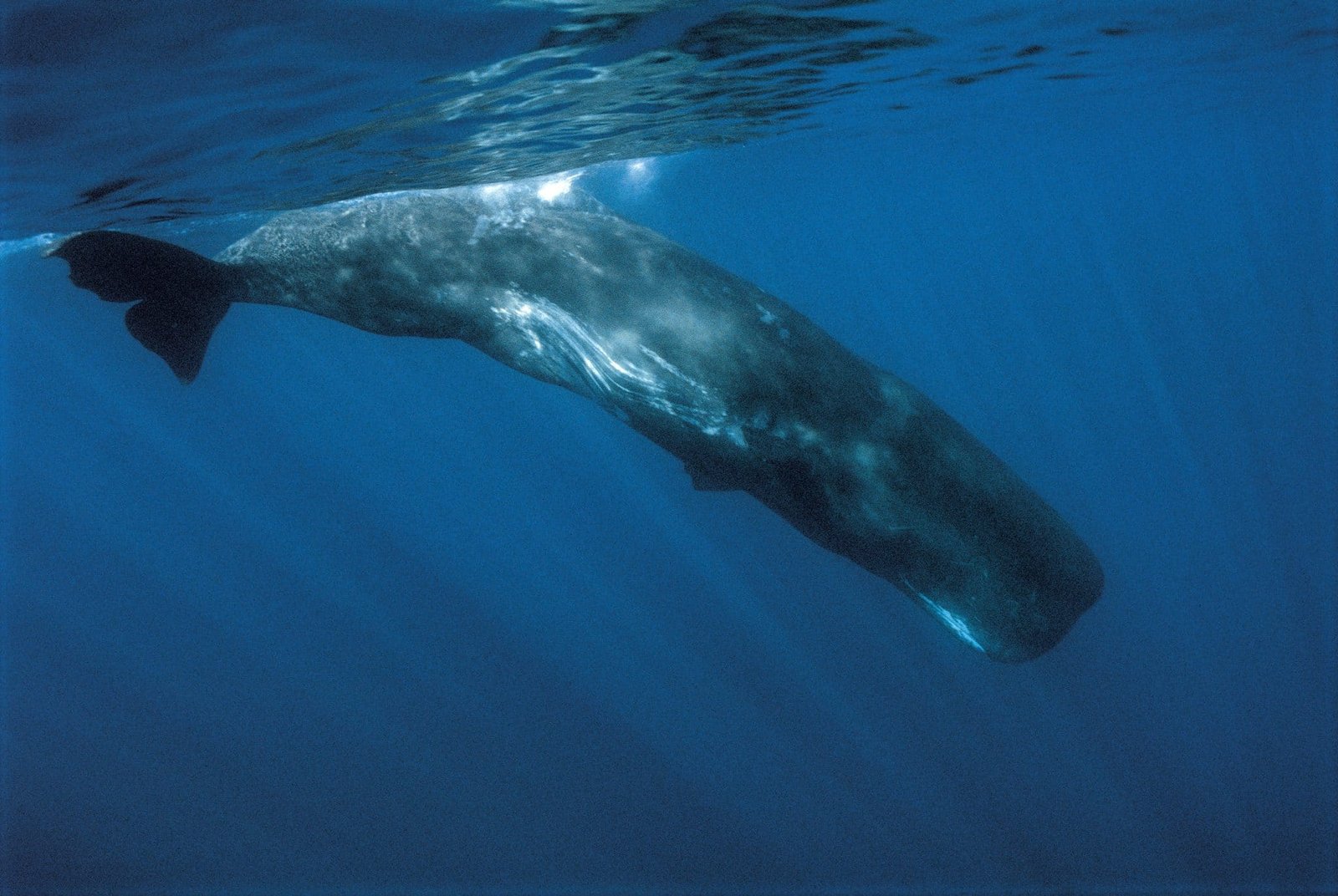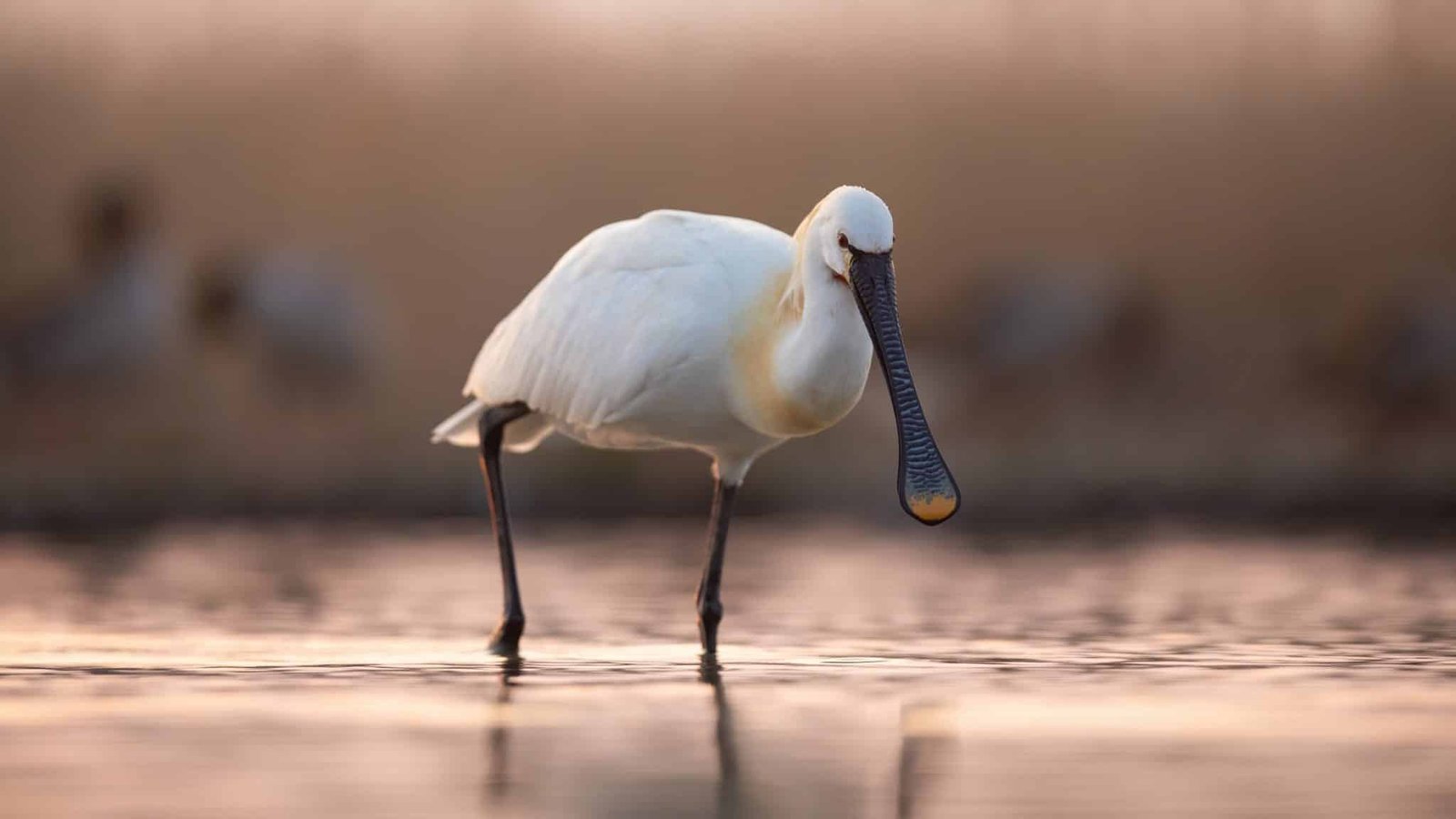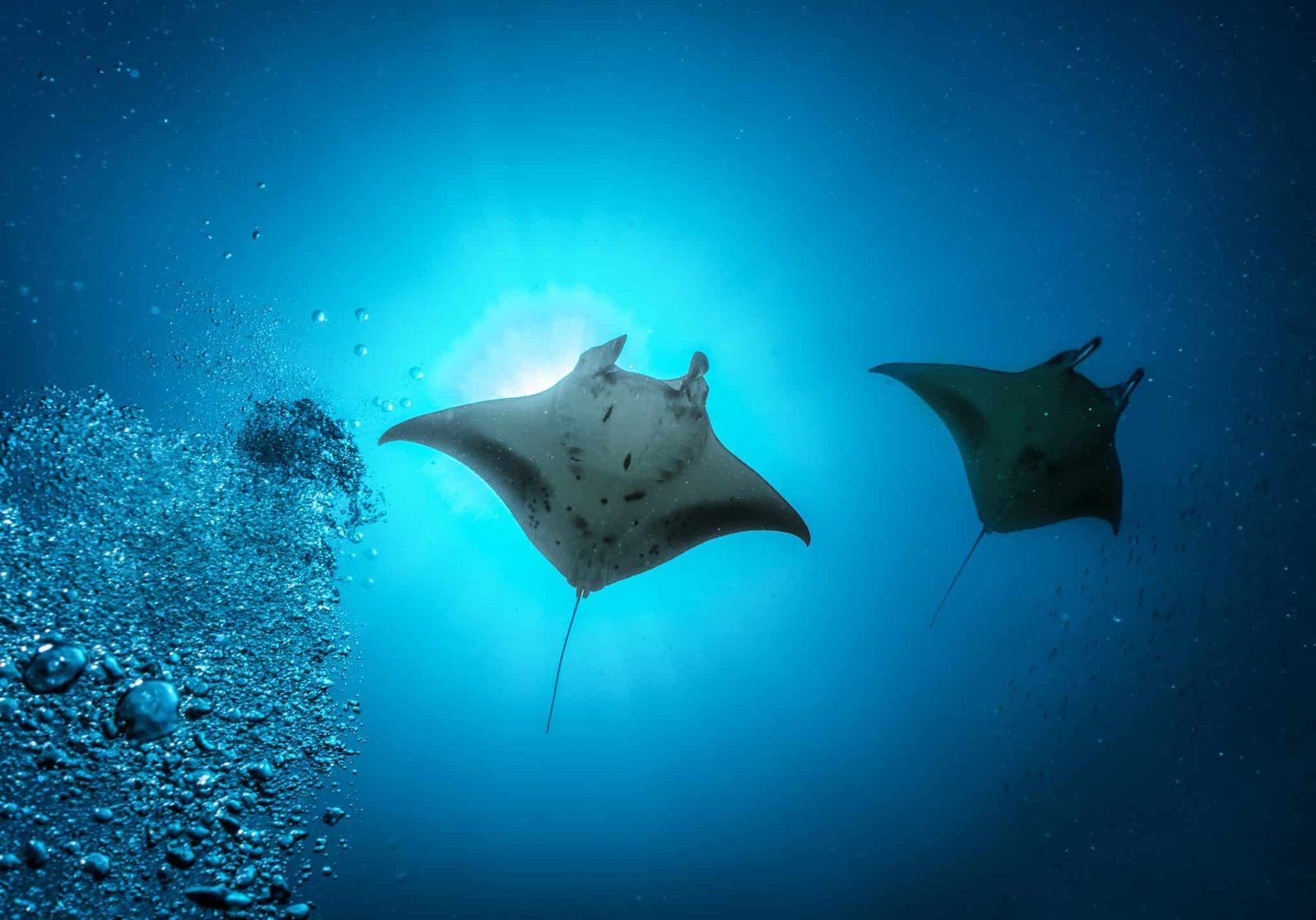The 15 Most Dangerous Animals In Costa Rica & How To Avoid Them
Costa Rica is one of the best vacation spots in the world. There are lush rainforests, colorful, vibrant wildlife and beautiful weather year-round.
With all the beauty that Costa Rica offers, it can be hard to remember that within its diverse wildlife are also some pretty dangerous animals that should be avoided.
When visiting more tropical climates, a good rule of thumb is to avoid any brightly colored animals.
This adaptation has become an evolutionary advancement for many poisonous or venomous animals because it wards off potential predators and prey.
Costa Rica is also home to 22 poisonous snake species! Overall, most of these animals aren’t too common and there are protective measures to help avoid anything too serious.
Keep reading to learn about 15 of the most dangerous animals in Costa Rica!

1. Fer de Lance Snake
The Fer de Lance is a large, venomous pit viper and is considered to be one of the most dangerous snakes in the world. These snakes are incredibly unpredictable, move quickly, and have a poisonous bite.
Fer de Lance snakes are often found alongside streams and in ditches, and they have a diet consisting of small mammals and birds. They can weigh up to 13 pounds, and typically grow to be between 1.2-2.5m.
Fer de Lance snakes have flat, broad heads and the males have bright tips on the end of their tails. Although these snakes don’t seek out confrontation, if they feel threatened, they will defend themselves, quickly.
If you encounter one of these snakes, you don’t want to end up bitten. Their venom is deadly to humans at 50 mg and it is believed that in each of their bites, up to 105 mg is released in its victim.
If you find yourself near one of these snakes, it’s best to walk the other way and create some space.

2. Costa Rican Coral Snake
The Costa Rican coral snake has rings of vibrant colors, and a unique pattern making it quite easy to identify in the wild.
Usually, averaging between 20-30 inches, coral snakes have black, red, white, or yellow rings going down the body of the snake.
These snakes prefer being left alone and don’t often reveal themselves to humans or other perceived threats. In fact they are nocturnal, so they don’t often come out until night, and during the day they prefer to spend most of their time burrowed underground.
Costa Rican coral snakes are often found in dry forests or rainforests throughout Costa Rica and have a diet consisting of mice, lizards, and even other small snakes!
Although unlikely you’ll have an encounter with a coral snake, it’s still good to look out for them. If they’re disturbed or put in positions where they feel they must defend themselves, they coil up, and their bites contain venom with a powerful neurotoxin that can paralyze its victims.
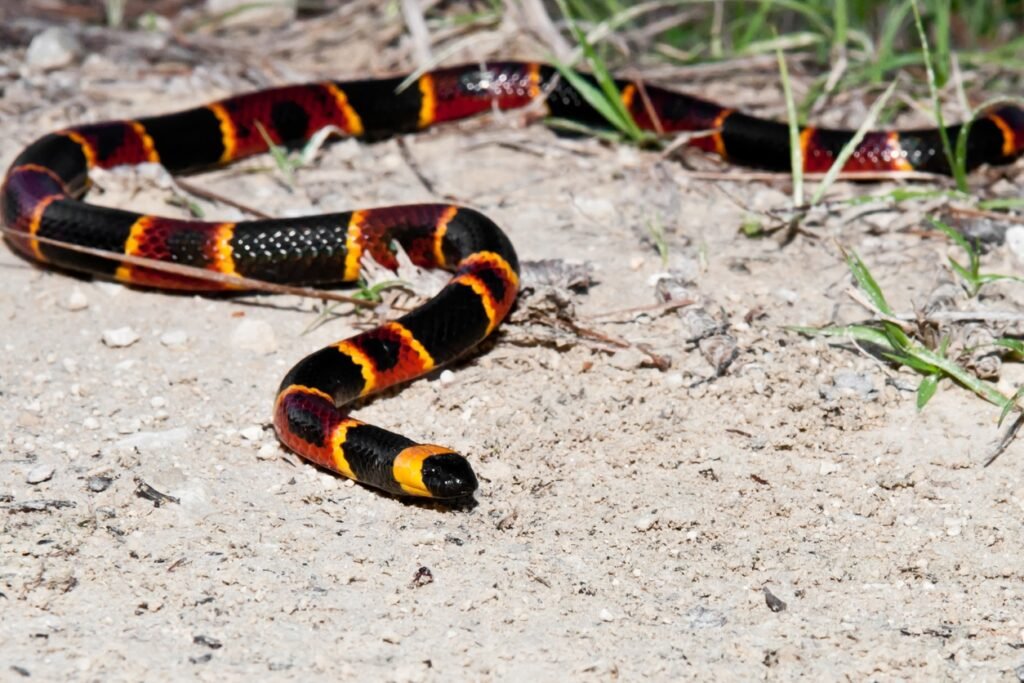
3. Poison Dart Frog
Poison Dart Frogs are one of the most dangerous frogs in the world. They are easily recognized by their brightly colored skin and can be found in a wide range of colors, from yellows to reds, blues, and oranges.
These frogs are only one inch in size and their skin is incredibly poisonous when it comes in contact with other animals. Poison dart frogs have a diet that consists of algae and different types of insects, and it’s believed that their diet plays a role in their skin being venomous.
Most poison dart frogs are not considered harmful to humans, however, the golden dart frog is one of the deadliest in the world, with enough poison to kill up to 10 men.
It is believed poison dart frogs got their names because there were stories of native people rubbing their arrows with these frogs to paralyze their victims in combat.
When exploring the forests of Costa Rica keep an eye open for these brightly colored dangerous animals, hidden in the leaves, on trees, or hopping around the forest floor.

4. Black Widow Spiders
The female black widow spiders have a poisonous venom that can be administered to their prey through their bite. Female black widows have a shiny black body only around ½ inch long. They are most often identified by a red hourglass on the underbelly of their abdomens.
The black widow is found in trees, stumps, under stones, in rodent burrows, and in man-made objects. Their bites can be incredibly painful and can leave behind symptoms that last upwards of 12 hours.
After getting bitten, you might feel nauseous, have an increase in blood pressure, trouble breathing, or even come down with a fever.
Although black widow bites aren’t typically lethal, they can create incredible discomfort. Luckily, it can be treated by washing the wound with soap and water, applying ice slowly, and seeking medical attention.
You can also wear insect repellant, long layers, boots, hats, gloves, and other protective outer layers to prevent the likelihood of getting bit by a black widow spider.
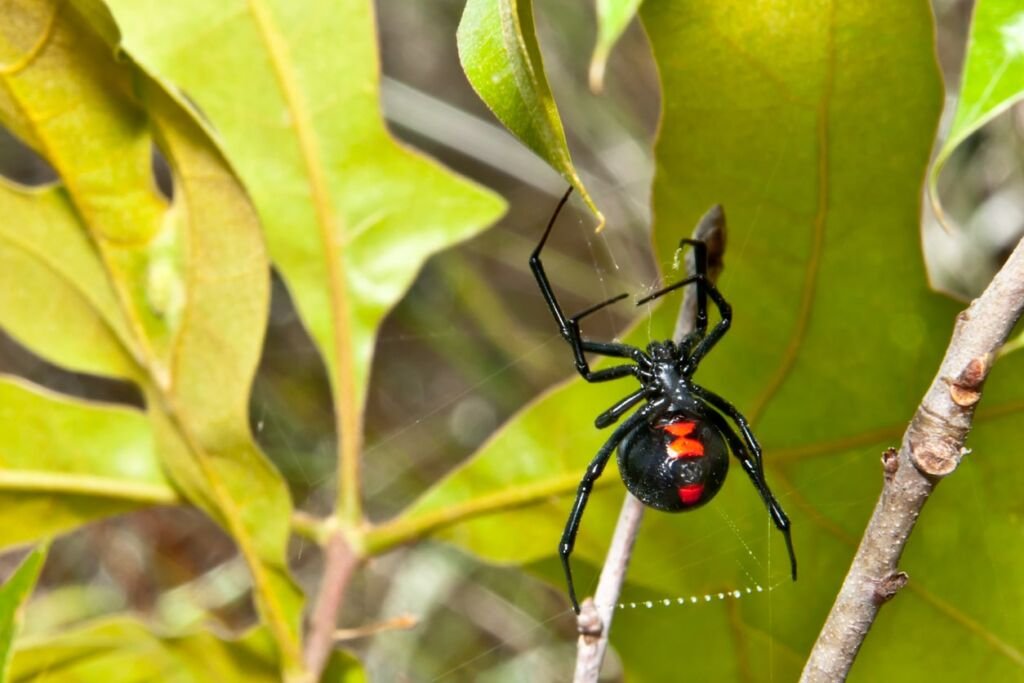
5. Jaguar
Jaguars are a rare species of large cats in Costa Rica, and are often unseen in the wilderness. But you may catch a glimpse of a jaguar in a National Park, where there are many more protections in place for them.
Jaguars can be two meters in length, range between 100 and 250 pounds, and typically live to be 15 years old. They are often covered in light brown fur with darker spots and due to their appearance, jaguars are sometimes confused with leopards.
Jaguars are sedentary animals that like to lounge around unless during mating season, hunting, or when they feel threatened.
Although you may not see one these dangerous animals on your trip to Costa Rica, it is likely that you will hear them roar from somewhere in the distance.
When hunting, Jaguars are highly skilled. They will climb up in trees, pouncing on their prey from above and killing them in one go.
Jaguars are incredibly muscular and dangerous animals. If you see them in the wild, it’s best to keep your distance so they know you are not a threat. If unprovoked, they will likely leave you be.
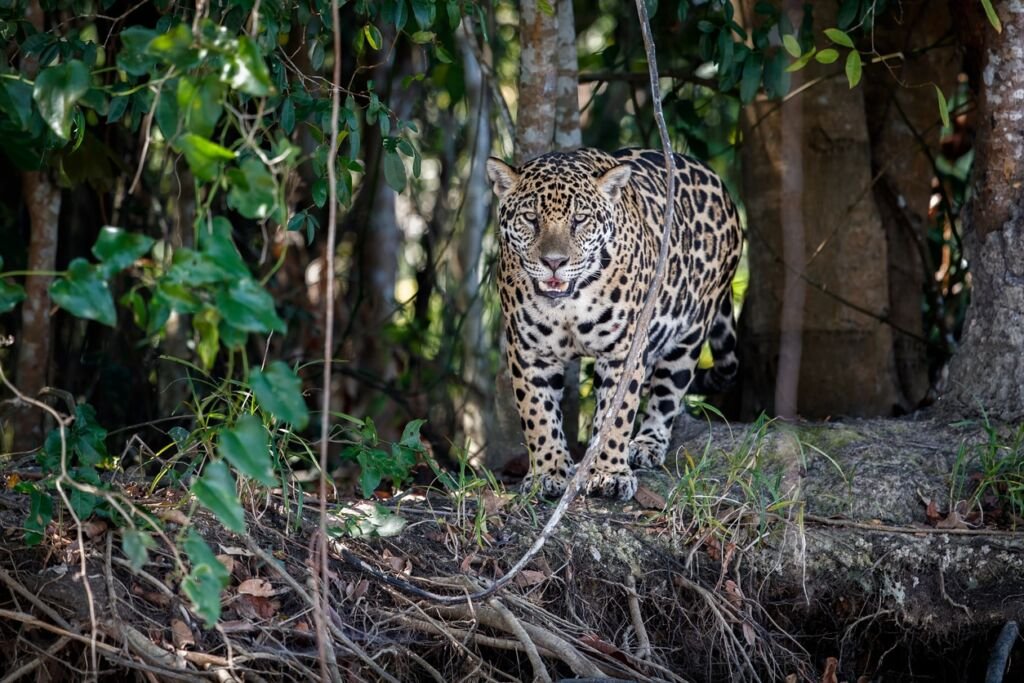
6. Pumas
Pumas, also known as mountain lions, are very close in size to jaguars, averaging between 100-250 pounds. Yet although large, they do not possess the same strength as jaguars.
Pumas are incredibly fast, agile, and have earned a reputaion for being quite dangerous towards humans. They can be quite aggressive toward humans, but it isn’t until they feel provoked or threatened that they will attack.
Pumas are mostly nocturnal, hunting for their meals in the evening, and their diet consists of deer, small rodents, birds and reptiles.
Pumas are able to adjust quickly and can be found in a wide range of environments, typically existing all throughout Costa Rica.
If you encounter a large cat, such as the Puma or Jaguar, it’s best to stay calm and slowly back away, and remove yourself from the situation.

7. Eye-Lash Viper Snake
Eyelash vipers are a bright yellow and have bristle-like scales above their eyes that appear to look like eyelashes.
These snakes are one of the smallest snakes in Central and South America, only found between 22-32 inches in length. Their scales are rough to the touch, even feeling sharp to some.
Eyelash vipers are quick when attacking their prey. They will bite, inject their venom, and then wait until their prey dies. Their diet consists mostly of birds, lizards, and frogs.
Eyelash vipers are also nocturnal creatures and spend much of their time hidden on tree branches. They prefer to be undisturbed, but when threatened they will attack. Although uncommon, their venom can be fatal to humans.
Eyelash vipers have a striking appearance, making them hard to miss. It’s best to leave these snakes be – they mean no harm but don’t like to be threatened.

8. American Crocodile
Costa Rica is home to the largest American Crocodile population. They are carnivorous reptiles and rely on sunlight to warm them up.
American crocodies are alarmingly large, often found between 10 and 13 feet long, weighing between 160-400 pounds, and living to be seventy years old.
These crocodiles are muscular, fast, and have very powerful jaws, and are often seen basking in the sunlight or hidden in murky waters or swamps.
When exploring outdoor areas where crocodiles are common, it’s good to stay aware of your surroundings. It’s unlikely they would attack if they are unthreatened but if they feel confronted, they can become aggressive quickly.

9. Bull Shark
Bull sharks typically have hostile tendencies and attacks on humans aren’t uncommon. They can be recognized by their short, blunt snouts and white bellies, which makes them difficult to see when swimming below them.
Bull sharks are quite intimidating, they grow up to 11.5 feet and weigh anywhere between 200-500lbs. Bull sharks also have 50 rows of teeth – well over the average for other sharks, which is typically between 5-15 rows of teeth. They are incredibly fast swimmers and the females are typically larger than the male sharks.
Bull sharks are found in warmer, tropical waters but can survive extended periods of time in bodies of freshwater. Their diet consists mainly of fish, rays, and dolphins.
Bull sharks aren’t afraid of people and are sometimes attracted to the commotion of busier areas created by humans.
Though they might try to investigate, it’s best to remain calm and try to keep your distance. They can be quick to react when feeling threatened. When it comes to the most dangerous animals in Costa Rica, the Bull Shark is one to watch.
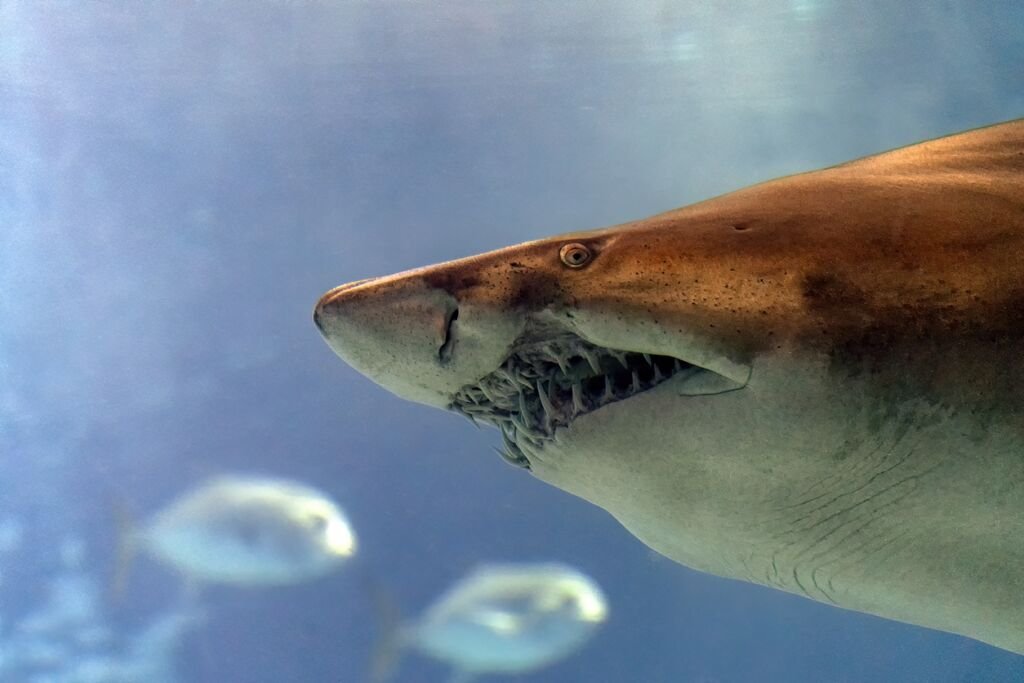
10. Brazilian Wandering Spiders
Brazilian wandering spiders, also known as armed spiders, are highly aggressive and very poisonous. They are brown in color and have a large fangs.
Brazilian wandering spiders are considered to be one of the most venomous species on the planet and can grow 4-5 inches in length. They are seen wandering the forest floor because they do not create webs for themselves. Wandering spiders are also active hunters and seek out their prey, often consuming crickets, small lizards and mice.
These spiders can cause harm to humans, inflict large amounts of pain, and in some cases, their venom can be deadly. Brazilian wandering spiders don’t go out of their way to attack, but they act defensively and are very easily disturbed.
If bitten by a Brazilian wandering spider, it’s best to seek out medical help immediatley. Although their venom can be deadly, anti-venom typically helps ensure people that get bitten, especially children, do not die.

11. Central American Bushmaster
The Central American bushmaster is the longest pit viper in the world, measuring up to 12 feet long. They prefer to live in humid forests, remaining close to the water and eating birds, small mammals, and rodents.
When hunting, these snakes will wait for their prey and ambush them once they arrive. Bushmasters have venomous bites that can kill their prey and predators. They have fangs that have sometimes been reported to exceed one inch which is how they deliver their venom.
These snakes like to stay close to water and often don’t stray very far. They are quite elusive and uncommon to see. So when on your trip it’s unlikely you’ll come across one of these snakes.

12. Bullet Ants
Bullet ants are small reddish-black ants that get their name from their incredibly painful sting, which has been compared to a bullet.
These ants can grow up to 1.2 inches and are not aggressive by nature. When they feel threatened they release an unpleasant odor to warn predators nearby.
Bullet ants are quite common throughout Costa Rica, found close to the base of tree trunks or wandering forest floors.
Although their stings aren’t lethal to humans, they are considered to be one of the most painful stings in the world and can kill many other animals. The pain from their sting can last up to 24 hours and can lead to nausea, shaking, paralysis and fever.
Bullet ants live in colonies, but when they go out hunting for food they go on their own. They will sometimes go up in trees and jump down on animals that make them feel threatened, but unless a nest is disrupted it is unlikely you would encounter multiple bullet ants at once.

13. Central American Rattlesnake
The Central American rattlesnake can grow up to 71 inches, but the average is between 51-63 inches. They are large carnivorous snakes that often feed on lizards, small rodents, and birds.
Central American rattlesnakes live in dry tropical forests, but they have been seen in rainforests, grasslands and meadows.
Their bites are poisonous and painful and create swelling and blistering where the bite was. In some instances, if the bite is left untreated or not treated properly it could result in an amputation. Luckily, the venom of Central American rattlesnakes isn’t considered to be lethal.

14. Mosquitoes
Mosquitoes are one of those insects that are incredibly common in tropical climates and can carry a plethora of diseases that can be spread to humans. They may be small, but they’re certainly one of the most dangerous animals in Costa Rica.
Unfortunately, some of the diseases carried by mosquitoes can be deadly and it is hard to completely prevent mosquito bites because they’re quick to land and don’t draw too much attention.
In Costa Rica, mosquitos have been known to carry the Zika virus, Dengue fever, and Chikungunya. All these diseases are transmitted to humans by Aedes mosquitos, which can be recognized by the white dots on their legs.
When spending time in muggy areas, it’s smart to wear protective layers, like long sleeves, socks, boots, and long pants. If you notice a mosquito on you with white dots on the legs, it’s best to visit a doctor for protective measures.

15. Ocelots
Ocelots are around 40 inches long and only weigh about 34 pounds, so they aren’t much bigger than a typical house cat.
They are relatively sedentary animals, spending their days lounging in trees and are nocturnal animals, so once night rolls around ocelots start prowling for their meals, which often consist of fish, monkey, and birds. These cats are ambush hunters, stalking their prey first and then going in for the kill.
Ocelots have incredibly sharp teeth designed to shred the meat they are consuming, making it easier to digest.
Although, ocelots don’t have the ability to kill a human they are capable of causing serious harm. Ocelots have sharp claws, teeth and often go after vulnerable spots on the body like the armpits or neck. So, if they are put in a position of vulnerability, they might react negatively.

The Most Dangerous Animals In Costa Rica: Our Final Thoughts
These 15 dangerous animals can be found throughout Costa Rica. Each of these creatures is unique, and some are more threatening to humans than others. It’s good to know what these animals look like and know where you might find them, so you can take the necessary precautions when exploring.
However, it’s also important to not live in fear of all these animals!
When there are reports of some of these animals hurting humans, it’s often because they feel threatened or in danger.
So, when exploring Costa Rica on your next trip, keep your distance from large animals, stay aware of your surrounding and try not to disrupt natural habitats.


